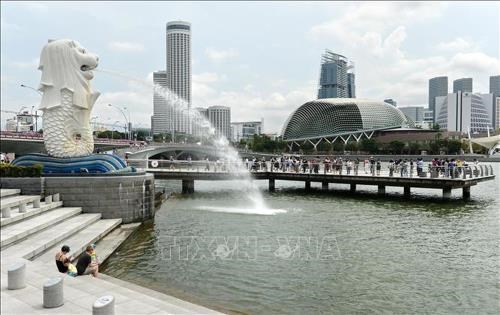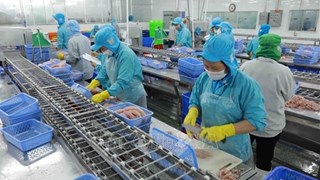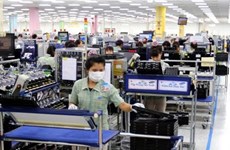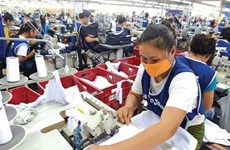US-China trade war negatively affects Southeast Asian economies
Southeast Asian economies will likely face continued external headwinds in the remaining months of 2019 as the US-China trade tensions weigh on the region, according to Nikkei Asia Review of Japan.
 A corner of Singapore capital (Source: VNA)
A corner of Singapore capital (Source: VNA)Tokyo (VNA) - Southeast Asian economies will likely face continued external headwinds in the remaining months of 2019 as the US-China trade tensions weigh on the region, according to Nikkei Asia Review of Japan.
An article published recently by Nikkei Asia Review said the fact pressures the governments of the regional countries to take steps such as cutting interest rates to boost their economies.
The trade tensions began biting Southeast Asia in late 2018. Official statistics showed that in the second quarter, the gross domestic product (GDP) of five out of the region's six major economies, including Indonesia, Malaysia, the Philippines, Singapore, Thailand and Vietnam, saw slower growth than in the previous quarter, with Thailand and Singapore suffering the most because they face falling demand for their key manufacturing exports, such as electronic products.
In the April-June period, Thailand’s economy grew at its slowest pace in nearly five years, expanding 2.3 percent, while Singapore’s growth rate was only 0.1 percent, the weakest in the last 10 years, due to a contraction in the electronic sector.
Growth in Indonesia, the region's largest economy, hit a two-year low of 5.05 percent in the second quarter due to falling prices for its commodity exports, such as palm oil.
Vietnam, whose GDP rose 6.8 percent in the first quarter, saw growth tick down to 6.7 percent in the reviewed period.
The Philippines saw a similar decline from 5.6 percent to 5.5 percent.
Malaysia witnessed a growth of 4.9 percent, 0.4 percent higher than that in the first quarter, backed by a 7.8 percent rise in private consumption.
Nikkei Asia Review quoted Margaret Yang, an analyst at CMC
Markets in Singapore, saying that Southeast Asian countries may face global
headwinds of manufacturing contraction, trade risks and supply-chain shuffling
over the course of the next few quarters.
“Apart from interest rate cuts, policymakers will perhaps need to also carry out fiscal stimulus, tax relief and employment incentives if a serious downturn is emerging”, she said.
“Apart from interest rate cuts, policymakers will perhaps need to also carry out fiscal stimulus, tax relief and employment incentives if a serious downturn is emerging”, she said.
With subdued growth in the second quarter and an
uncertain external environment, the governments and central banks in the region
are under pressure to rev up their economies through monetary and fiscal
measures in the coming months, the newspaper stressed.-VNA











